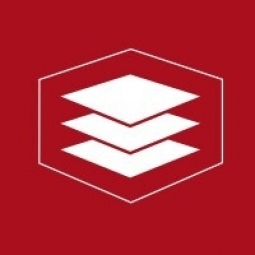Technology Category
- Drones - VTOL & VTOL Hybrid Drones
- Infrastructure as a Service (IaaS) - Hybrid Cloud
Applicable Industries
- Education
- Healthcare & Hospitals
Use Cases
- Demand Planning & Forecasting
- Virtual Training
Services
- Training
About The Customer
The Institute of Reproductive Grief Care is a non-profit organization that provides education, research, expertise, and support to individuals experiencing pregnancy and reproductive loss. They offer resources and education to healthcare professionals, including hospitals, medical professionals, therapists, social workers, and pregnancy centers. They also extend their services to community and faith leaders. The Institute was looking for a way to transition their traditional in-person training to a hybrid learning environment that could cater to their extended enterprise business model.
The Challenge
The Institute of Reproductive Grief Care, a non-profit organization that offers education, research, expertise, and support after pregnancy and reproductive loss, was faced with the challenge of transitioning their traditional in-person training to a hybrid learning environment in 2020. They needed a learning management platform that was tailored to fit their extended enterprise business model. The platform needed to allow users to register for two types of training – on-demand and hybrid learning. Furthermore, to maintain accreditation and secure funding for additional grants, they required a robust reporting solution that could measure key data points across all of their certifications and evaluations.
The Solution
The Institute of Reproductive Grief Care adopted CD2 Learning's eCommerce storefront as their solution. This allowed their learners to sign up for on-demand courses as well as webinars. It also enabled hospital groups to make bulk purchases on behalf of their staff and distribute seats accordingly. The organization delivers their training through CD2 Learning’s native course building tool, which is equipped to build eLearning and hybrid courses. These courses include video webinars, handouts, assessments, anonymous/non-anonymous surveys, and embedded Zoom meetings. By embedding Zoom meetings, users never have to leave the learning platform, creating a true “one-stop shop.” Additionally, the Institute makes the most out of the broad reporting library that CD2 Learning offers by tracking surveys, assessment scores, and locations of users in an effort to improve training and expand their reach.
Operational Impact

Case Study missing?
Start adding your own!
Register with your work email and create a new case study profile for your business.
Related Case Studies.

Case Study
Hospital Inventory Management
The hospital supply chain team is responsible for ensuring that the right medical supplies are readily available to clinicians when and where needed, and to do so in the most efficient manner possible. However, many of the systems and processes in use at the cancer center for supply chain management were not best suited to support these goals. Barcoding technology, a commonly used method for inventory management of medical supplies, is labor intensive, time consuming, does not provide real-time visibility into inventory levels and can be prone to error. Consequently, the lack of accurate and real-time visibility into inventory levels across multiple supply rooms in multiple hospital facilities creates additional inefficiency in the system causing over-ordering, hoarding, and wasted supplies. Other sources of waste and cost were also identified as candidates for improvement. Existing systems and processes did not provide adequate security for high-cost inventory within the hospital, which was another driver of cost. A lack of visibility into expiration dates for supplies resulted in supplies being wasted due to past expiry dates. Storage of supplies was also a key consideration given the location of the cancer center’s facilities in a dense urban setting, where space is always at a premium. In order to address the challenges outlined above, the hospital sought a solution that would provide real-time inventory information with high levels of accuracy, reduce the level of manual effort required and enable data driven decision making to ensure that the right supplies were readily available to clinicians in the right location at the right time.

Case Study
Gas Pipeline Monitoring System for Hospitals
This system integrator focuses on providing centralized gas pipeline monitoring systems for hospitals. The service they provide makes it possible for hospitals to reduce both maintenance and labor costs. Since hospitals may not have an existing network suitable for this type of system, GPRS communication provides an easy and ready-to-use solution for remote, distributed monitoring systems System Requirements - GPRS communication - Seamless connection with SCADA software - Simple, front-end control capability - Expandable I/O channels - Combine AI, DI, and DO channels

Case Study
Driving Digital Transformations for Vitro Diagnostic Medical Devices
Diagnostic devices play a vital role in helping to improve healthcare delivery. In fact, an estimated 60 percent of the world’s medical decisions are made with support from in vitrodiagnostics (IVD) solutions, such as those provided by Roche Diagnostics, an industry leader. As the demand for medical diagnostic services grows rapidly in hospitals and clinics across China, so does the market for IVD solutions. In addition, the typically high cost of these diagnostic devices means that comprehensive post-sales services are needed. Wanteed to improve three portions of thr IVD:1. Remotely monitor and manage IVD devices as fixed assets.2. Optimizing device availability with predictive maintenance.3. Recommending the best IVD solution for a customer’s needs.

Case Study
HaemoCloud Global Blood Management System
1) Deliver a connected digital product system to protect and increase the differentiated value of Haemonetics blood and plasma solutions. 2) Improve patient outcomes by increasing the efficiency of blood supply flows. 3) Navigate and satisfy a complex web of global regulatory compliance requirements. 4) Reduce costly and labor-intensive maintenance procedures.

Case Study
Cloud-based healthcare solution for Royal Philips
Royal Philips wanted to launch its cloud-based healthcare solution HealthSuite Digital Platform in China to deliver services to help cope with challenges related to urbanization and population growth. Philips wanted to achieve this goal by combining mobile, cloud computing and big data technologies. To bring this platform and product to market, Philips required cloud computing and local technical service capabilities in China, in addition to a flexible IT infrastructure that could handle user requests.








